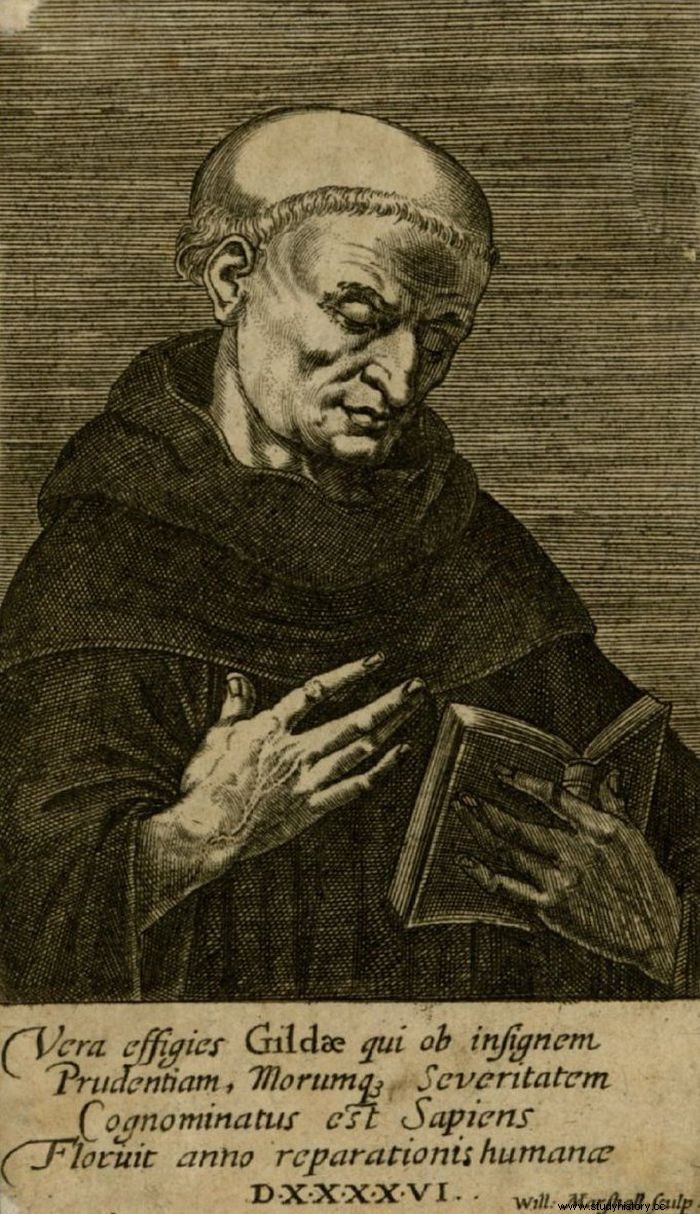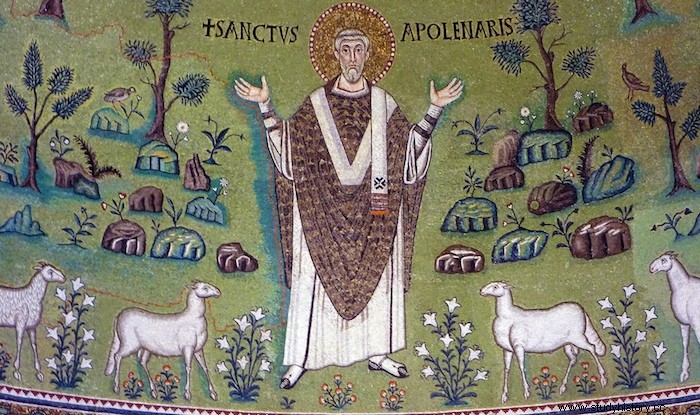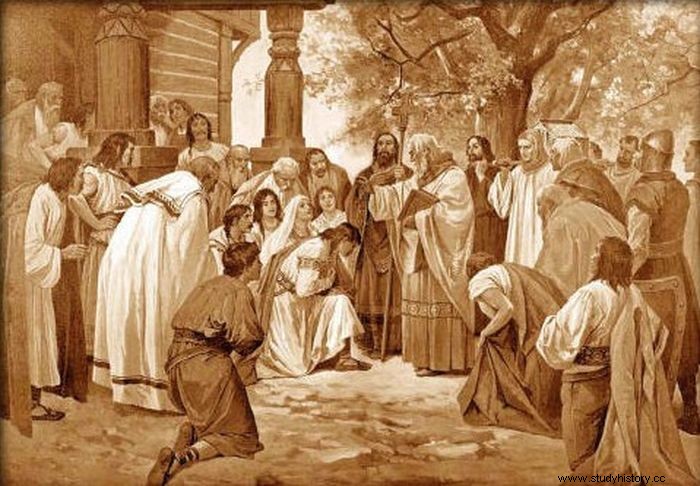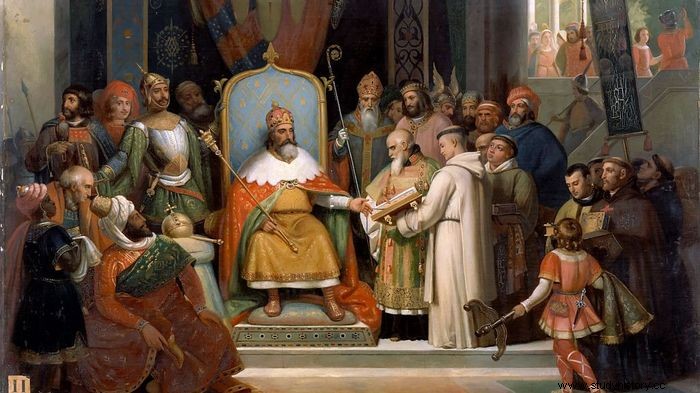The 900-year-old 'Dark Ages' took place between the 5th and 14th centuries. The timeline begins with the fall of the Roman Empire and ends with the Renaissance. The Dark Ages were traditionally a period of minimal cultural growth and scientific discovery. Although many experts disagree with the title "Dark Ages", it may still be the best match for a period full of mystery. The name of the period relates to the invasion of so-called barbaric peoples in what had been the Western Roman Empire.
Western Europe had a decisive era through the Middle Ages. After the fall of the Western Roman Empire, the "Dark Ages" was an era of instability and poverty. During this era, there was no strong central government to protect peace. Roman roads and water supply infrastructure deteriorated during this time. Agriculture and mining have almost disappeared. Travel was dangerous, and trade routes were barely in use. Diseases and diseases destroyed malnourished populations of humans and animals, and reduced birth rates.
Apart from what was taken care of by Christian monks and missionaries, Western art and culture were almost non-existent. The clergy followed reading, writing, manuscript lighting, and panel painting practices to keep the Christian religion alive. Monasteries were the only remaining cultural, educational and intellectual institutions, and as a result they were looted. Following subsequent Viking and Norse invasions in Ireland, precious books were forced to be removed from their original sites. The hiding and preservation of the books had to take place. The Book of Durrow, the Lindesfarne Gospels, and the Book of Kells are some of the best examples of Christian art and skill that have survived.
Development of the concept of the Dark Ages
Francesco Petrarch, an Italian scholar, coined the phrase "dark ages". Petrarca, who lived from 1304 to 1374, used this term to characterize a lack of quality in Latin script. Other intellectuals followed suit, expanding the definition to include literature and all forms of culture. As a result, the sentence described Europe's alleged lack of culture and progress in the Middle Ages.
Apparently, cultural progress marks the classical period. Both Roman and Greek civilization contributed to art, science, philosophy, architecture, and political systems throughout the world.
Admittedly, certain features of Roman and Greek society and culture were abhorrent, such as gladiatorial battles and slavery. Nevertheless, European history took a "wrong turn" after the death of Rome and the subsequent withdrawal from domination.
After Petrarch's rejection of the "dark age" of literature, other intellectuals of the period expanded the term. This happened to cover the lack of civilization in Europe from 500 to 1400. However, historians constantly examine these dates due to overlap in dates, cultural and geographical variations and many other considerations. As a result, the period is sometimes referred to as the Middle Ages or the Feudal Period.
Scholars began to limit the term "dark ages" to the era between the 5th and 10th centuries when further evidence became available in the 18th century. Early Middle Ages was the name of this time.
The term has a bad meaning in general. Historians are still debating whether the Middle Ages were really gloomy. Many experts are now debating whether the title "Dark Ages" is appropriate.
Compares the Dark Ages to the Empires
The phrase "Dark Ages" has a hazy history. Yet the common use was in contrast to the recognition given over the luminous cultural achievements of the Greek and Roman empires with the knowledge and civilization that existed after their decline and demise.
This idea was implemented in the Enlightenment. During this time, many experts likened the Romans' enormous architectural achievements to a return to simpler wooden construction. But unlike 19th-century civilizations in Europe and America, there has been a discussion of the concept of a dark, barbaric past.
The roots of this concept are in the Western European belief from the 19th century that some civilizations are superior to others, which is difficult to hear today. However, the use of the term is purely academic, especially by historians. While the Romans were excellent record holders, historical books and papers were sparse from the 5th century and for several centuries afterwards.
The first two centuries

The two centuries after the fall of Roman rule in Britain at the beginning of the fifth century describe the term "dark". For these years there is practically no historical record. The finest surviving source is an exhorting sermon entitled 'De Excidio Britanniae' written by the British monk Gildas probably between the end of the fifth century and 530 AD
It is a rhetorical barracks of Roman-British leaders, both before and after Gildas' time, which he blamed for Britain's fall in the last days of Roman control. Unfortunately, the majority of the few sites Gildas names are unknown. The vast majority of those he rebuked remain anonymous. The dates of the events he detailed and even the date he wrote are still debatable. However, it is the finest we have, and it gives the conventional post-Roman British history that everyone else is taken from.
St. Patrick wrote two letters in the fifth century. One describes how Irish slave robbers kidnapped him. The other criticizes a guy named Coroticus for looting and looting a Christian settlement. As the Western Roman Empire crumbled, Britain was left vulnerable and weaker. The British elite, weakened by hunger and plague and militarily impoverished and politically abused, developed a strategy led by an anonymous "proud tyrant". They wanted to call Saxons from Europe to protect them from attacks by Scots and Picts. This strategy quickly backfired. The Saxons turned against the British and began to create chaos and cited conflicts over wages and food as a pretext.
Archeology, on the other hand, confirms the fact of rapid urban collapse. The number of rooms occupied in Cirencester dropped significantly from more than 140 in 375 AD. to about 10 times 425. Demolition of magnificent mansions and public buildings occurred during this time.
Dark Ages of Art

The Catholic Church advocated for some teaching and study in many regions of Europe after the collapse of the Roman Empire, bringing many of its institutions, such as secular schools.
The church will be the most stable factor in Western Europe and all territories north of the Mediterranean. Monks tried to recreate most of Roman literature and scientific books and some of the Greek period. Meanwhile, the absence of many notable writers from this period in England does not mean that civilization remained dormant. In fact, some of England's most enduring legendary figures evolved during this time. The oldest recorded allusion to England's most famous heroic ruler comes in the form of a comparison, according to a Welsh poet from the 6th century. While the first recorded poem by the warrior Beowulf dates from the 10th century, other experts believe that the epic was based on oral traditions dating back a long time.
Economy during the Dark Ages
Another common feature associated with the Dark Ages is the lack of massive buildings. Cities and towns no longer constructed huge stone buildings. The gradual deterioration of Roman infrastructure, such as aqueducts, also affected the city's quality of life.
During this time, the population of major cities such as Rome and Constantinople declined. Farmers would have had to pay monthly taxes to maintain the empire and local towns during Roman times. But when the administration crumbled, there was a reduction in the tax burden. The villages and towns were smaller. Farmers did not have to produce so much or work so hard to feed the city.
Archaeological evidence suggests that ordinary people lacked resources and products. For example, simple everyday goods such as fresh coins, ceramics and roof tiles had completely disappeared by 450 in different regions of Europe and were not discovered again until around 700.
Technology during the Dark Ages
It is true that Western Europe did not have as many technological or scientific advances in the Dark Ages as later. However, these shortcomings offset an explosion in culture and learning in the southern Mediterranean, with the first Islamic caliphates.
Watermills, for example, remained a viable technology in Europe. In learning, Isidore of Seville, an archbishop and scholar, established an encyclopedia of classical knowledge. The relative isolation of the British Isles also allowed the development of distinctive jewelry and beautiful masks. Some finds occurred during the archaeological excavation of Sutton Hoo's tombs in eastern Anglia, including a Viking ship burial.
While the Dark Ages may have begun with the fall of the Roman Empire, the Middle Ages began with the arrival of leaders such as Charlemagne in France, whose government united large parts of Europe. It provided continuity under the auspices of the Holy Roman Empire.
Spread of Christianity during the Dark Ages

Christian observance marked the early Middle Ages to a large extent. However, a wide range of religious beliefs existed, and even the Christian church was a complex and diverse body. Scandinavia and parts of Germany practiced Germanic paganism in the north, with Iceland becoming Christian around 1000 AD. Traditional religious activities persisted. At the end of the eighth century, Alcuin, an Anglo-Saxon monk, asked why Christians were still enthusiastic about heroic tales, asking, "What has Ingeld got to do with Christ?" There were several divisions in the church. Monophysitism, for example, divided society and the church by claiming that Jesus had only one nature rather than two:human and divine, which led to disagreement at the level between emperors, states and nations.
Reading skills during the Dark Ages
The link between illiteracy and ignorance is a completely new development. Most of the knowledge was oral communication and memory during the Middle Ages and beyond. Early Anglo-Saxon societies could remember everything from property titles to marriages to epic poetry. 'Scop' or minstrel could recite an epic over several days, and demonstrated extremely high memory. During this period, literacy was generally restricted behind the walls of monasteries after they were established. However, in places like Lindisfarne, monks could produce intricate theological treatises and exceptional manuscripts.
Debating the concept of the Dark Ages
The arguments against the name "Dark Ages" are about two basic points. The first is that "dark" is a derogatory adjective that obscures the achievements of the era and sheds unwelcome light on parts of its social, cultural and economic history. The second is that accusing this time of obscurity in an unnecessary way sets it apart and exoticizes its apparent mystery. Suppose, for example, that we assume that 'black' is equal to 'evil' in this context. In that case, Britain's most heavily romanized parts saw a social collapse of unparalleled suddenness and seriousness at the turn of the century.
It is almost clear that this was accompanied by civil war and a prolonged period of chronic instability. These must have been dark days for those who lived through it and were affected by it. The idea that other times may have been more painful and thus more worthy of the nickname "dark" is irrelevant.
The undoubted assumptions underlying this critique are far more disturbing. But regardless of the historical significance behind the original coin, we should be able to see that "darkness" does not always mean "badness", and that obscurity is a far more realistic concept. And one of the least controversial aspects of the period between 400 and 600 AD. is that a significant absence of evidence characterizes it. Yes, people back then did and created wonderful things. However, we know very little about them, significantly less than most historical times. So the Dark Ages are not necessarily darker than the long age of prehistory, but they are darker than the centuries that came before and after them.
Charlemagne and the Rise of the Holy Roman Empire

When Charlemagne, the son of a great warrior who controlled vast regions of what is now Germany, Austria, France, Hungary and the Netherlands, became the leader of the Franks, Europe's largest tribe, light began to infiltrate Dark Ages in the late eighth century. . He and his family fought and conquered territory for decades, establishing a powerful central government and a stabilizing control structure - a feudal system - that protected the poorest people through regional landlords with private militias. This rule brought most of Western Europe together for the first time since the fall of the Roman Empire.
Pope Leo made Charlemagne emperor of the Holy Roman Empire in 800 AD, and saw a chance to restore the Western Church. But Charles the Great's goal was more than just political. Despite his inability to read and write, he appreciated the culture and launched several initiatives to promote it. From the Eastern Roman Empire, the transfer of monk writers and lay craftsmen to the West took place and began to construct books. Researchers worked to develop writing standards in Latin so that it could become the kingdom's unifying official language. The new "Carolingian" painting reintroduced Roman realism while incorporating modern stylization. All this gave Charlemagne (Charlemagne) the title "Father of Europe".
During this time, international trade resumed in Europe. Art was no longer just the realm of Christian priests in the 13th century. Artists organized guilds, set up studios and applied for assignments to create murals, panel paintings and illuminated prayer books from the church, the government, the aristocracy and the newly prosperous trade. For example, the Crusader Bible (Morgan Bible), an enlightened book published in northern France in 1240, depicts action scenes full of inflicted battle wounds and meticulous realism with specific weapons, spurs, armor, and other realistic clothing.
The conclusion
It can be challenging to develop new topics to research or rewrite when there are so many times in history. This reason was not the case during the early medieval period. There are few early Middle Ages, and many studies remain. Furthermore, breakthroughs in archeology have recently revealed knowledge of how humans lived through this period. It may be difficult to find evidence in the archaeological document when people constructed with wood instead of stone, but more are being discovered now. Finally, there are the unexpected findings:manuscripts buried in archives for decades, hoarding hidden in the field, and recently translated allusions.
